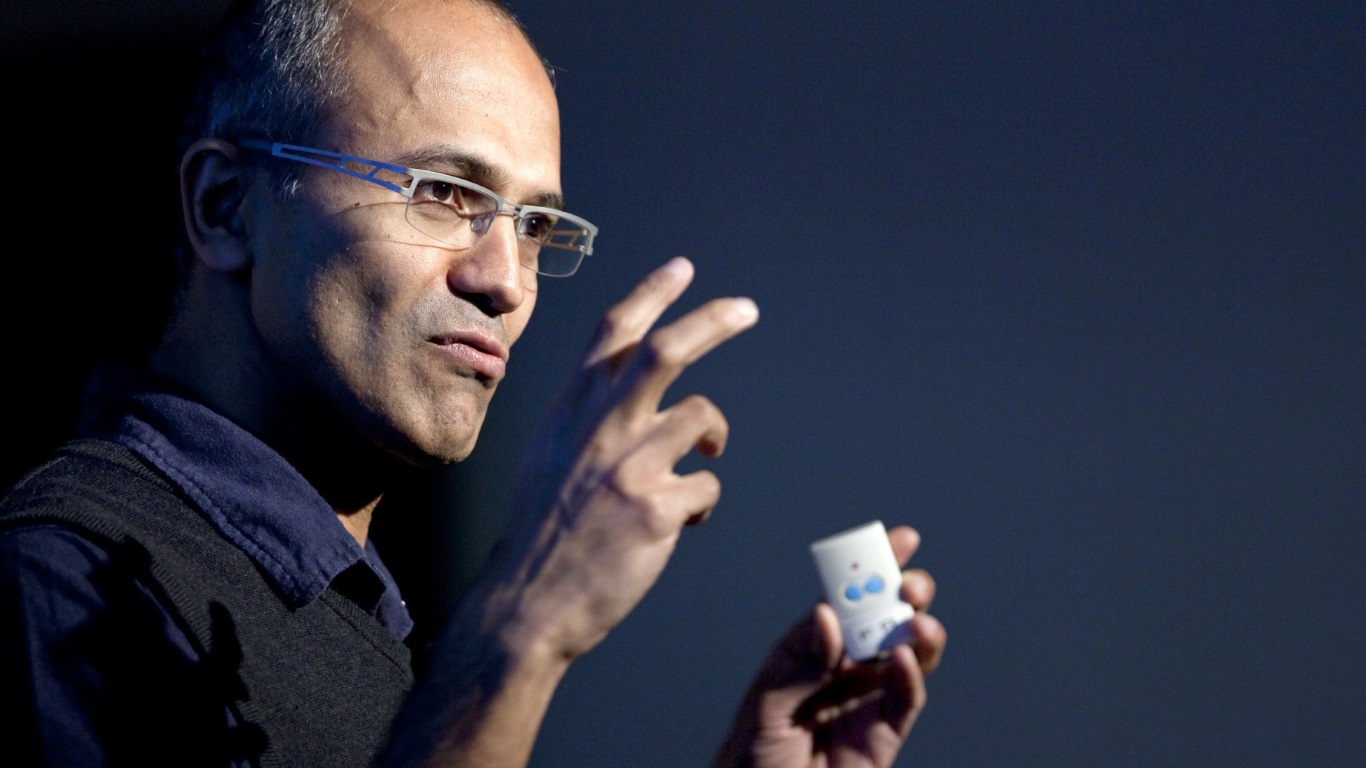 NEWS
NEWS
 NEWS
NEWS
 NEWS
NEWS
Microsoft CEO Satya Nadella
Navigating the cities of the world could soon become a lot easier for the millions of blind and visually impaired people thanks to Microsoft’s innovative navigational headset, which lets you hear your surroundings when seeing them is not possible.
The product, which is still in its pilot stage, gives the visually impaired what Microsoft has called a “3D Soundscape”. It combines a GPS tracker, a gyroscope and a compass, which through a headset connected to your smartphone helps you to navigate streets. The technology combines Bluetooth beacons that are connected to various objects in a given area, as well as employing information from Microsoft’s Bing maps. What’s more impressive is that you can still hear other noises around you as the headset uses ‘bone-conducting’ technology, which consists of pads connected to your upper jawbone that transmits noise through vibrations and bypasses the eardrum.
The technology was partly developed by Guide Dogs in what could be a great improvement to the lives of blind and visually impaired people. Microsoft’s Amos Miller, a former trustee of Guide Dogs who is also visually impaired, was quoted in the Guardian as saying, “The project was inspired when my daughter was born. I wanted to be able to take her out for a day, or just go to the cinema – and I thought, ‘how can I make that something that I would not hesitate to do?’”
So how well does it work? Rory Cellan-Jones, a BBC technology correspondent, tried out the new product, but not before she was blindfolded and asked to walk around London without the aid of the device. She writes, “Before trying out Microsoft’s headset I put on a blindfold, picked up a white stick and went for a short walk along London’s Grand Union Canal… I found it an exhausting and disorientating experience.” She goes on to say, after being given the headset to help her navigate her path, “as I hesitantly made my way down a residential street, across a road and to a bus stop, the instructions – ‘parked cars and overhanging trees ahead’ – gave me added confidence and the 3D sound provided me with a somewhat better feel for my surroundings.”
The technology will also give users hints on where to go, what’s coming up, and will also give directions to locations that have been requested.
Support our open free content by sharing and engaging with our content and community.
Where Technology Leaders Connect, Share Intelligence & Create Opportunities
SiliconANGLE Media is a recognized leader in digital media innovation serving innovative audiences and brands, bringing together cutting-edge technology, influential content, strategic insights and real-time audience engagement. As the parent company of SiliconANGLE, theCUBE Network, theCUBE Research, CUBE365, theCUBE AI and theCUBE SuperStudios — such as those established in Silicon Valley and the New York Stock Exchange (NYSE) — SiliconANGLE Media operates at the intersection of media, technology, and AI. .
Founded by tech visionaries John Furrier and Dave Vellante, SiliconANGLE Media has built a powerful ecosystem of industry-leading digital media brands, with a reach of 15+ million elite tech professionals. The company’s new, proprietary theCUBE AI Video cloud is breaking ground in audience interaction, leveraging theCUBEai.com neural network to help technology companies make data-driven decisions and stay at the forefront of industry conversations.